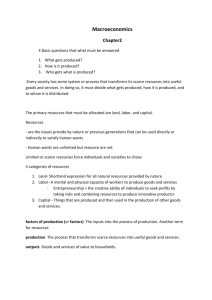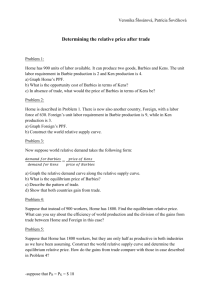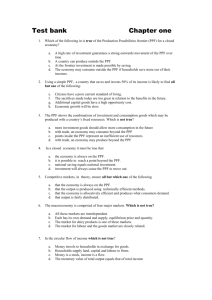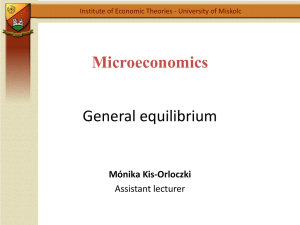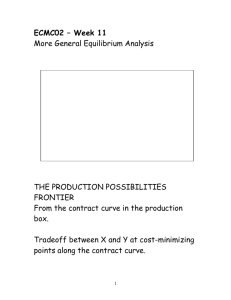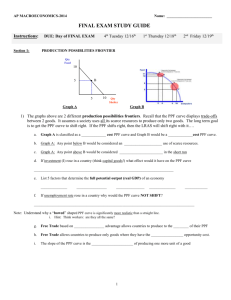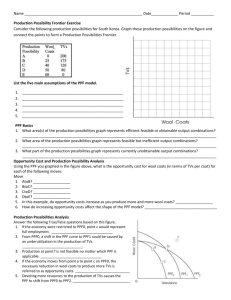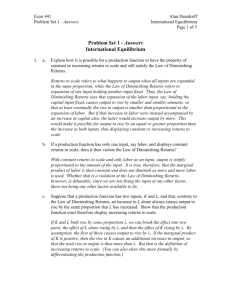Rethinking the use of Concept maps
advertisement
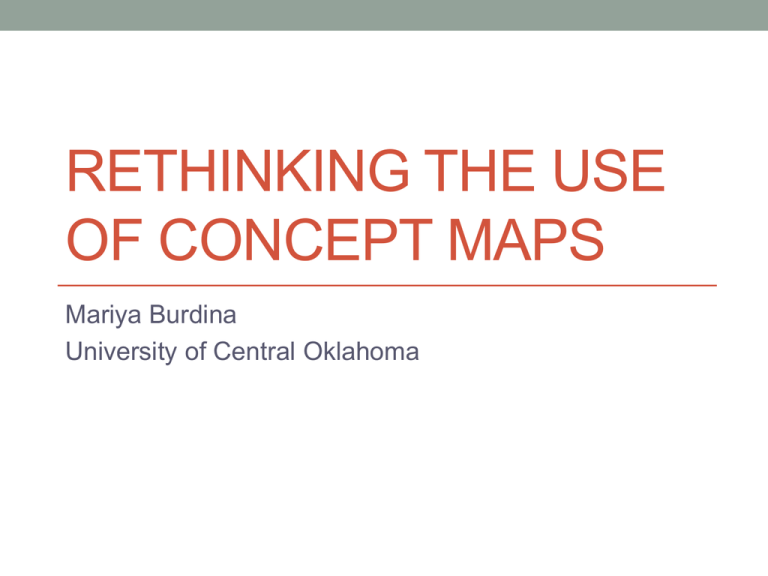
RETHINKING THE USE OF CONCEPT MAPS Mariya Burdina University of Central Oklahoma How can I get to the library? What’s the difference between income and price elasticity? Temporal contiguity principle Students learn better when corresponding words and “pictures” are presented simultaneously rather than successively • Mayer, 2004 Traditional concept maps • A concept map is a diagram showing the relationships among concepts • Satisfies temporal contiguity principle GDP map (Nora Buchman, Scribd) GDP 𝛾 = 𝐶 + 𝐼 + 𝐺 + 𝑁𝑋 Nominal GDP Real GDP GDP Deflator Inflation Spatial principle • Students learn better when corresponding words and pictures are presented near rather than far from each other • Mayer, 2004 Conceptual chapter map • A graphical tool for organizing concepts • Shows links among concepts • Provides brief explanation of the concepts • Satisfies temporal contiguity principle • Satisfies spatial principle Use • Review tool for a topic or a chapter • Drawn on the board by instructor • Completed with the help of students • Distributed to students • Used during in-class assignments/quizzes • Option for “revising” a chapter map Production Possibility Frontier • Slope • Constant • Increasing • Points: • inside • outside • on PPF • Corners • Shifts in PPF • Affecting one good • Affecting both goods Production Possibility Frontier show every possible combination of two goods produced by a country Shifts of PPF occur when either Slope of PPF shows the Opportunity Cost Constant OC Good A Increasing OC Good A Good B Good B Intercepts: technology or amount of resources is Red – max production changed of good A when B = 0 Orange - max Affecting one good Affecting both goods production of good B when A = 0 Good A Good A Possible but not efficient: Green and every point inside PPF Possible and efficient: Black, Red, Orange and Good B Good B every point on PPF Not possible but desirable: Blue and every point outside PPF A Good Good B Demand, Supply, Market Equilibrium • Law of demand • Shifts of demand curve • Law of supply • Shifts of supply curve • Market equilibrium • Surplus • Shortage • Changes in market equilibrium Market Demand Changing price: Increasing price decreases Qd Decreasing price increases Qd Supply Changing Demand: Changing Supply: Number of consumers Popularity Future prices Change in income: - Normal goods - Inferior goods Number of Sellers Better technology Future prices Input prices Prices/popularity of similar goods Changes in Equilibrium Algorithm: 1) Draw the D and S curves and show the equilibrium 2) Decide whether event shifts S curve or D curve or both 3) Decide in which direction curve(s) shifts. 4) Illustrate the shifts using the graph 5) Use supply-demand diagram to identify new equilibrium P and Q. Changing price: Increasing price increases Qs Decreasing price decreases Qs “Evidence” • Students use concept maps in class • A-ha moments • Reduced load of questions during the in-class assignment “Evidence” • Business statistics • Normal vs. Standard Normal vs. Uniform • Hypothesis testing • Intermediate Microeconomics • Max utility vs. Min cost • EV vs. CV Practical strategies • Introduce maps as a review before in class assignment • Assign “revise” the map instead of the “create” the map • Keep it simple (Coherence Principle) • Students learn better when extraneous material is excluded rather than included • Think what’s important and what is not. Only the most important things should be included in the map Practical strategies • Keep it colorful to emphasize important points • Make sure that assignment can be answered with concept map • Provide links and definitions; allow space for student to fill in with examples “Evidence” • Principles of Micro • PPF • Opportunity Cost and Trade • Demand, Supply and Equilibrium • Elasticity • Surplus • Public goods • Cost • Market comparison • Each type of market • Principles of Macro • GDP • Inflation • Productivity and growth • Savings and Investment • Unemployment • Open market economy Next step: Class Experiment • Conceptual chapter map in Principles of Macroeconomics • 2 classes of students: • Chapter map for in-class assignment for Class 1 • Notes for in-class assignment for Class 2 • No notes for the test • Chapter map for quiz for Class 1 • Notes for quiz for Class 2 • No notes for the test
